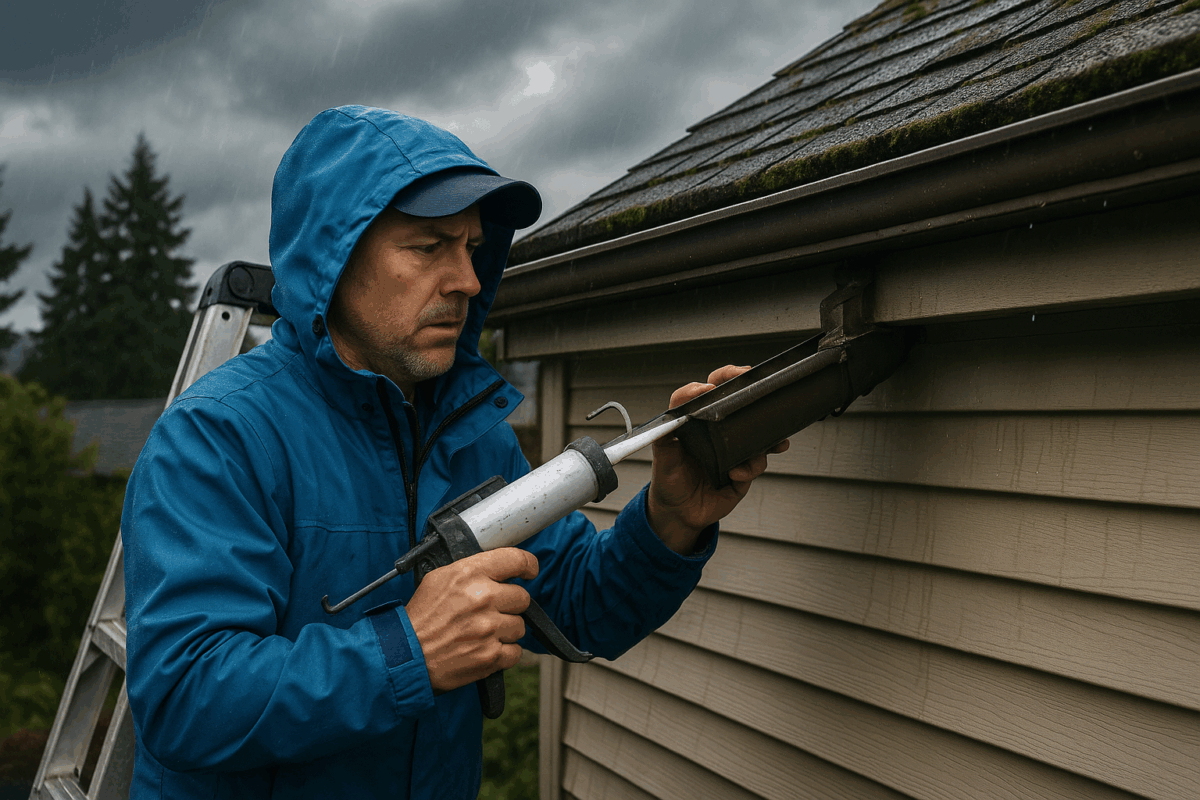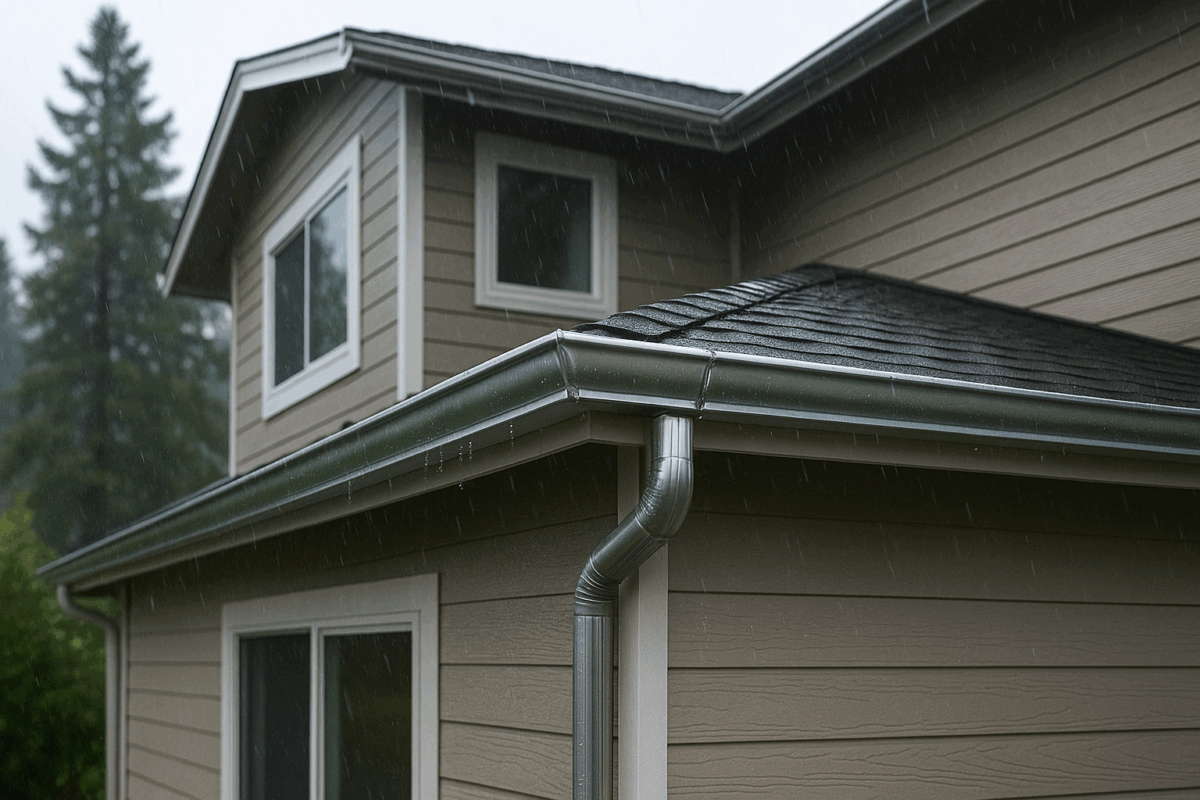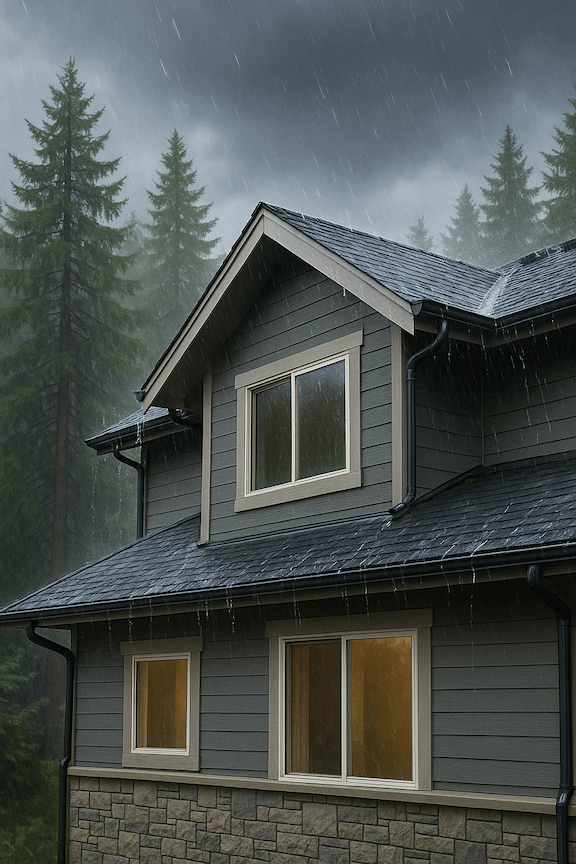Oregon is known for its wondrous forests, rainy season, and crisp, fresh air. However, if you own a home here, you know that beauty comes with maintenance. One of the most overlooked parts is the gutters.
Most of us don’t think about them until water is pouring over the edge during a storm. But by then, damage might already be happening. Proper timing for gutter cleaning is one of the easiest ways to protect your home.
In this article, we will clearly outline when to clean your gutters, why it is important, and how to get ahead of expensive problems.
The High Cost of Clogged Gutters
Clogged gutters are unsightly and can compromise the structure of your home. Water doesn’t flow properly and backs up. That’s when things become expensive.
What can clogged gutters do?
- Leak into your roof and cause wood rot or attic mold.
- Soak your fascia boards, leading to long-term decay.
- Pool around your foundation, which may cause cracks or basement flooding.
- Warp your siding or stain your exterior paint.
Oregon’s climate makes these risks even more urgent. Our rainy season starts around mid-October and can last into May. November is among the wettest months in the Portland/Willamette region, combining many wet days with significant rainfall. If your gutters are blocked, that rain has nowhere to go but down the sides of your house.
Keeping clean gutters is like giving your home a raincoat. They’re your first line of defense during Oregon’s stormy months, and they only work if they’re clear.
The Golden Rule: Twice-a-Year Cleaning
If you remember one thing from this blog, let it be this: Clean your gutters at least twice a year. Once in late spring and again in late fall.
This is the standard recommendation from most pros, and for good reason.
Why twice a year?
- Oregon has two major debris cycles: fall leaves and spring pollen/needles.
- Our long wet season means water is constantly trying to flow through your system.
- Skipping even one cleaning can lead to buildup, overflow, and damage.
If you’re searching online for gutter cleaning near you around those times, you’re already ahead of the game.
The Essential Late Fall Cleaning (October-November)
After the leaves drop but before the heavy winter rain, you want your gutters completely clear.
Why late fall matters:
- Oregon’s native trees, like maples, alders, and oaks, shed a ton of leaves.
- Leaves pile up fast, especially after a windy October.
- November brings some of the heaviest rainfall of the year in much of Oregon, putting extra strain on clogged gutters.
- If water freezes, ice dams can form and push moisture under your shingles.
The goal here is to go into winter with an open drainage system. Waiting too long means cleaning in cold, slick conditions or dealing with expensive roof issues come January.
The Critical Spring Cleaning (April-May)
Spring cleaning isn’t just for closets. Once the storms ease up, your gutters are likely packed with smaller, less visible debris.
Why spring matters:
- Winter storms leave behind pine needles, grit, and roof sediment.
- Oregon has a notorious pollen season, especially from oak, birch, pine, and cedar trees.
- Pollen forms a sticky film inside your gutters that traps even more debris.
- Spring showers can turn that buildup into sludge, causing overflow and water damage.
Cleaning your gutters in April or May clears out the junk and preps your system for summer rain and dry season runoff.
Special Considerations for Oregon’s Microclimates
Not all Oregon homes are the same. Your location might change how often you need to clean.
Quick breakdown:
- Valley homes (e.g., Willamette Valley) face heavy leaf volume and benefit most from a strong fall cleaning.
- Coastal homes deal with wind-driven rain and storm debris that clogs gutters fast.
- Wooded lots often collect pine needles year-round and may need a third cleaning, either in early summer or mid-winter.
Key Signs You’re Overdue
If you are not sure if it’s time to clean, look for these warning signs. If you notice even one, it’s time to call for a gutter cleaning service near you.
Signs to watch for:
- Water spilling over the sides during rain
- Gutters sagging or pulling away from the house
- Visible plant growth or moss in the gutters
- Staining or streaks on your siding
- Water pooling at the foundation
By the time these show up, you’re already risking water damage and possibly voiding an insurance claim if it’s considered preventable. The longer you wait, the more a simple fix can spiral into major repairs, far exceeding a routine gutter cleaning cost.
DIY vs. Professional Gutter Cleaning
Some homeowners want to do it themselves. For single-story homes with safe ladder access, that might work.
The risks of DIY:
- Ladders are dangerous. The CDC reports over 500,000 ladder injuries each year in the U.S., with roughly 300 deaths.
- Oregon roofs stay wet and slick, especially in fall and spring.
- Most homeowners can’t see or access clogs in downspouts or joints.
Hiring a pro means you get a cleaning as well as an inspection, slope correction, and joint resealing. Many companies, including ours, offer gutter cleaning and repair in a single visit. That means less guesswork and more peace of mind.
Protect Your Home Before the Weather Turns
Oregon weather rarely waits. One week it’s dry and breezy, the next you’re dealing with back-to-back storms. And if your gutters aren’t ready, that’s when the real damage starts. Timing your cleanings is how you avoid the big-ticket repairs no one wants.
Fall is the first checkpoint. Once the leaves finish dropping (usually by early November), your gutters are on borrowed time. If they’re still full when winter hits, water can back up, freeze, and cause everything from leaks to fascia rot. Spring brings its own trouble, including pine needles, pollen, and roof grit. They don’t look like much, but they build up fast and clog the system just as April downpours roll in.
If you live under trees or near the coast, you might need one extra cleanup to stay ahead. Either way, catching issues early is cheaper than fixing wood damage or basement flooding later. And yes, the gutter cleaning cost is usually far less than one trip from a roofer or foundation contractor.
If your gutters are due or if you’re not sure, let’s get it taken care of. Call (971) 777-9899 to schedule your professional gutter cleaning with Gutter Empire before the next storm hits. You can also get a free estimate for our services here.
Key takeaways
- Clean gutters at least twice a year—late fall and late spring. Clearing debris after leaf-drop (Oct–Nov) and again in April–May preps your system for Oregon’s long wet season and prevents overflow, fascia rot, and foundation pooling.
- DIY ladder work carries serious risk. In the U.S., ladder use leads to 500,000+ injuries and ~300 deaths annually, a major reason many homeowners opt for professional gutter cleaning instead of climbing wet ladders in Oregon’s climate.【NIOSH/CDC: Ladder Safety†https://blogs.cdc.gov/niosh-science-blog/2017/03/13/ladder-safety-month/】
- Microclimate matters—some homes need a third cleaning. Coastal wind-blown debris, heavy tree cover (needles year-round), or shaded, moss-prone rooflines often justify an extra mid-season clean to keep water moving.
- Timing prevents costly damage (and insurance headaches). Proactive cleaning is far cheaper than repairing roof leaks, fascia rot, mold, or basement seepage—and neglected maintenance can complicate claims.
- Pro cleanings solve more than clogs. A quality service should also flush downspouts, correct slope, reseal joints, and flag soft fascia—reducing repeat issues and extending gutter life.





